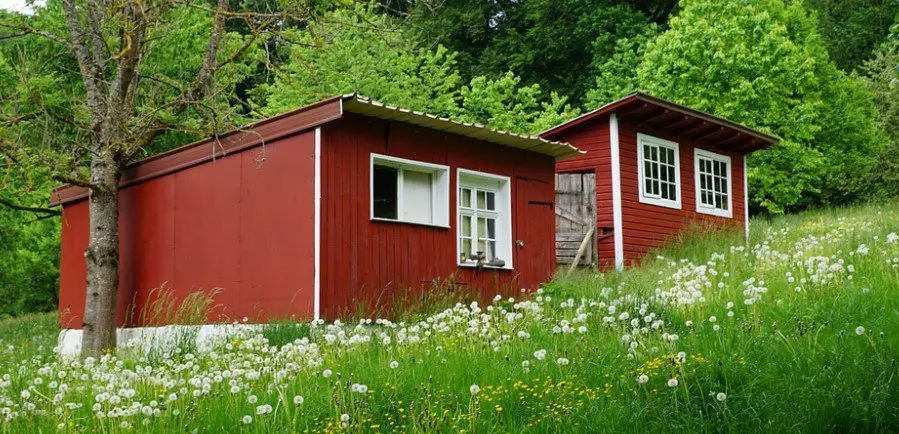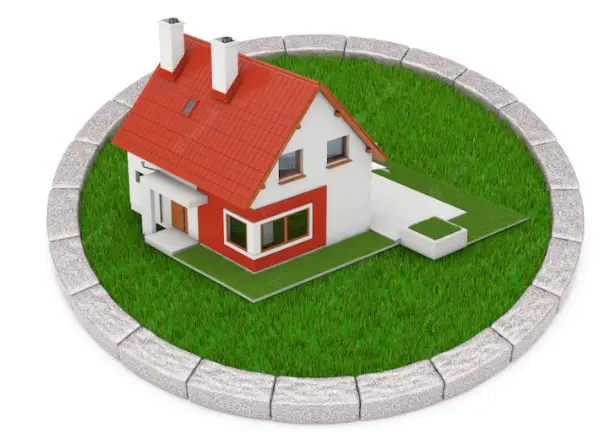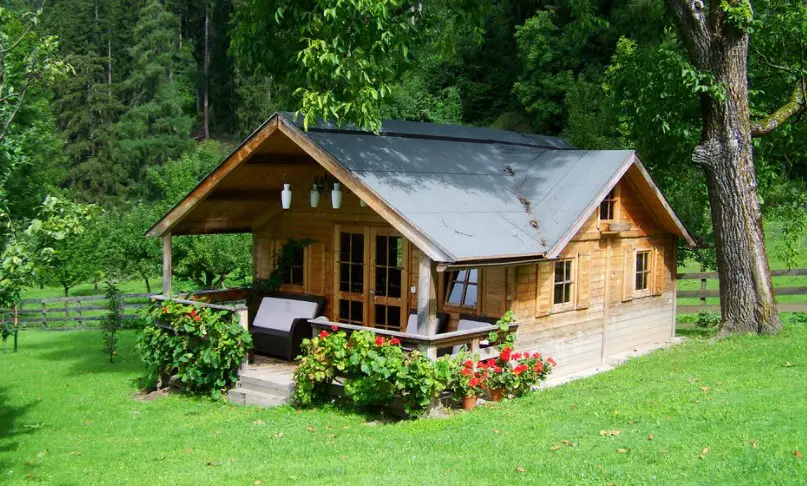Last Updated on July 14, 2023 By Emma W. Thomas
Some states in America deem tiny houses illegal because they are hard to regulate, especially in zoning and safety. Again it is hard for some cities to decide whether the tiny houses should be legally considered a home or recreational cabin, vehicle, or shed.
List of USA States Where Tiny Houses are Illegal
- Alabama
- Alaska
- Arkansas
- Connecticut
- Delaware
- Hawaii
- Illinois
- Iowa
- Kentucky
- Louisiana
- Maryland
- Mississippi
- Missouri
- Montana
- New Jersey
- New York
- North Dakota
- Ohio
- Oklahoma
- Rhode Island
- Virginia
- West Virginia
- Wisconsin
- Wyoming
Why are tiny houses prohibited in some states?

They are not allowed by the state’s building codes
The states put up regulations against building tiny houses because they are yet to accept their practicality. Another reason for rejecting tiny houses is the lack of resources to validate the movement that comes with house owners.
However, tiny house communities that are relentless enough have made their grievances heard and persuaded their state government to allow them to build. Despite the efforts, the states that allow tiny houses always put up new strict governing laws to prevent the mushrooming of such structures.
The department of housing and urban development (HUD) is against them
In the United States, the most famous tiny houses are those with a foundation or wheels. They are considered RV, and thus department of housing and urban development (HUD) doesn’t approve them as homes.
And, since the state relies on federal government aid to regulate some policies and codes, they may feel that allowing tiny houses in their state would become a burden. In case of anything, the HUD would be reluctant to assist in regulating them.
It is challenging for the state to regulate tiny houses
Firms that build tiny houses have many years of experience, but their credibility and compliance with other building codes are questionable. Housing codes regarding zoning, security, and privacy are still unsettled regarding tiny houses.
All this speculation and assumptions do not mean that tiny houses are unsafe. It means that the state does not see them as well equipped to satisfy living standards in America. The safety issue with tiny houses is mainly ventilation, space, movement of air, and moisture retention in the walls. All these issues are seen as dangerous and challenging to regulate hence the refusal to legalize the building of tiny houses.
Curb the greed of landlords and landowners
The tinier the house, the less space it will consume. The landowners may take advantage of fitting as many tiny homes as they can on their land. Consequently, they may exceed the limit set for the number of properties allowed on a piece of land. Hence, there is a need for strict laws to prevent the issue, such as shotgun-style houses in New Orleans.
Shotgun-style houses are tiny homes with a width of less than 12 feet.
Rules against recreational vehicles (RVs)
A tiny house on wheels is referred to as an RV; campers and trailers also fall in this category. Many states do not allow parking and use of such.
What size of a house is considered tiny
Tiny houses are identified by their size and may vary from state to state. However, most states consider a house 600 square feet or less as tiny. But, most tiny houses for sale in most US states are 225 square feet, approximately eight times smaller than traditional homes. However, physically you might not even feel that your house is tiny because they are designed to feel bigger from the inside.
What Are Some Ways to Keep the Tiny House Legal?
There are several ways to ensure that your tiny house remains legal and compliant with regulations. Here are some tips to help you stay within the law:
- Check local zoning laws: Before constructing or parking your tiny house, research and familiarize yourself with the zoning regulations in your area. Some places have specific regulations for tiny houses, while others may classify them as accessory dwelling units. Ensure that your tiny house meets the requirements set by your local government.
- Obtain necessary permits: Depending on where you plan to live, you may need to obtain various permits. These could include building permits, electrical permits, plumbing permits, or occupancy permits. Check with your local authorities to determine which permits are required and ensure they are obtained before moving in.
- Comply with size and height restrictions: Many jurisdictions have restrictions on the size and height of dwellings. Confirm that your tiny house adheres to these guidelines to avoid any legal issues. Additionally, some areas may limit the number of occupants allowed in tiny houses, so be sure to abide by these regulations as well.
- Connect to utilities legally: Ensure that your tiny house is connected to utilities in a legal and compliant manner. This could involve obtaining permits for electrical and plumbing connections or utilizing alternative sources such as solar power or composting toilets. Consult professionals to ensure that your tiny house meets safety standards and regulations.
- Park on appropriate land: Finding suitable land to park your tiny house is essential. Look for land zoned for residential use or areas that permit temporary or mobile homes. In some cases, joining established tiny house communities may be a good option, as they have already navigated legalities and provided the necessary infrastructure.
- Seek legal advice: If you’re uncertain about the regulations or requirements surrounding tiny houses in your area, consider consulting an attorney specializing in zoning and land-use laws. They can provide guidance specific to your situation and assist you in ensuring your tiny house remains legally compliant.
Is it beneficial to live in a tiny house?
People who have owned and lived in tiny houses attest to their many benefits. These include;
Lower expenses
Constructing a tiny house is far cheaper than a full-sized one. It will cost you $23,000 to build a tiny house compared to $272,000 for a full-sized one. When you cut back on building costs, you can use the extra money for luxuries, save for retirement or work less.
Besides, tiny houses don’t have room for luxuries forcing the owners to live a simple life. They only own the essentials reducing the expenses on excess and sometimes unnecessary stuff.
Lower energy use
Tiny houses have everything reduced, even the cost of living. The utilities like bills for electricity, water, fuel, and waste disposal will be much lower. You can decide to use a small solar array for power and a small wood stove for heating to avoid electricity costs.
No mortgage
Most people in the US can’t afford to own a home without taking a mortgage. This adds to the long-term cost of living, which burdens the people. But, you can own a tiny house free and clear through your savings.
Environmental friendly
Also, for people worried about their carbon footprint and reducing pollution, a tiny house is the best choice for you. With the reduced space, maintenance, cleaning, and use of resources that affect the environment, pollution goes down.
Easier maintenance
It is easy to maintain tiny houses due to less space to clean and few appliances to repair. Consequently, you spend less time on chores and extra on hobbies, work, and relationships.
Freedom of movement
Many small homes are built on trailers making it easy to relocate without giving up the comfort of a home.
What are the disadvantages of having a tiny house?
Living in a tiny house is not all time a bed of roses. Here are a few drawbacks;
- Limited living space
- There is reduced storage space.
- Strict zoning rules.
- Limited hosting guests’ capabilities
- Practicability, especially when the number of family members increases
- The resale value never goes up.
- The tiny houses are prone to fires.
Why do tiny house rules differ from one state to the other?

Rules regarding tiny houses building codes differ from one state to the other. This is mainly due to market strategy, property tax, and developers who come together and regulate or plan how they would like their state to look. Sometimes, this planning and regulation do not merge well with the tiny house style of buildings.
States that allow the construction of tiny houses also put up codes to ensure they are built a specific way. But, some local ordinances still push back the idea of tiny houses as they do not want to mushroom of such structures in their environs.
How do I know if my state allows the building of tiny houses?
Before you decide whether to build a traditional or tiny house, you must be sure that your state allows it. Your local county clerk’s office or any construction company can easily give you all the information regarding building rules.
You can also Google to see whether the state you are in allows building tiny houses.
How do tiny houses access amenities like electricity and water?
Just like a traditional house, tiny houses have plumbing and electrical wiring. Small homeowners can also opt for other sources of power such as solar panels and wind. However, the rules imposed are strict to increase safety in these tiny houses.
Is it economical to buy or build a tiny home?

Overall, it is more economical to build than buy a tiny house as the sellers will seek to make a profit. The average cost of building a tiny home is 300 dollars per square foot.
The cost will vary based on the factors highlighted below:
- Size of the house, the smaller the tiny house gets, the cheaper it costs.
- Whether the house will be on wheels or a foundation.
- Cost of building permits.
- The building materials.
- Type of amenities you want in the home.
Final Thought
Tiny houses are illegal in some states as they are deemed less practical and associated with low quality of living standards. However, states that allow tiny houses have seen their advantages and support the homeowners. There are also strict and rigid rules that help regulate the building and management of small homes to prevent the mushrooming of such structures. If you wish to own one, research to ensure your states allow and adhere to their building codes.
References:
https://www.insider.com/tiny-house-owners-zoning-laws-2020-12
Emma is a graduate of Domestic Science or Family and Consumer Sciences (Home Economics) from the University of Wisconsin. She has 7 years of experience Working with the strategic section of BestBuy and now writing full-time for Homeeon.
From Managing the Home, Interiors, Cleaning, and Exteriors to Gardening and everything about Making A Home Liveable – is her passion and this Homeeon is the result of this.
Emma loves decorating her home with the best stuff found online. She cares about quality over anything and writes reviews about them here in Homeeon. Get in touch with her over Pinterest.
Keep reading her blogs.

